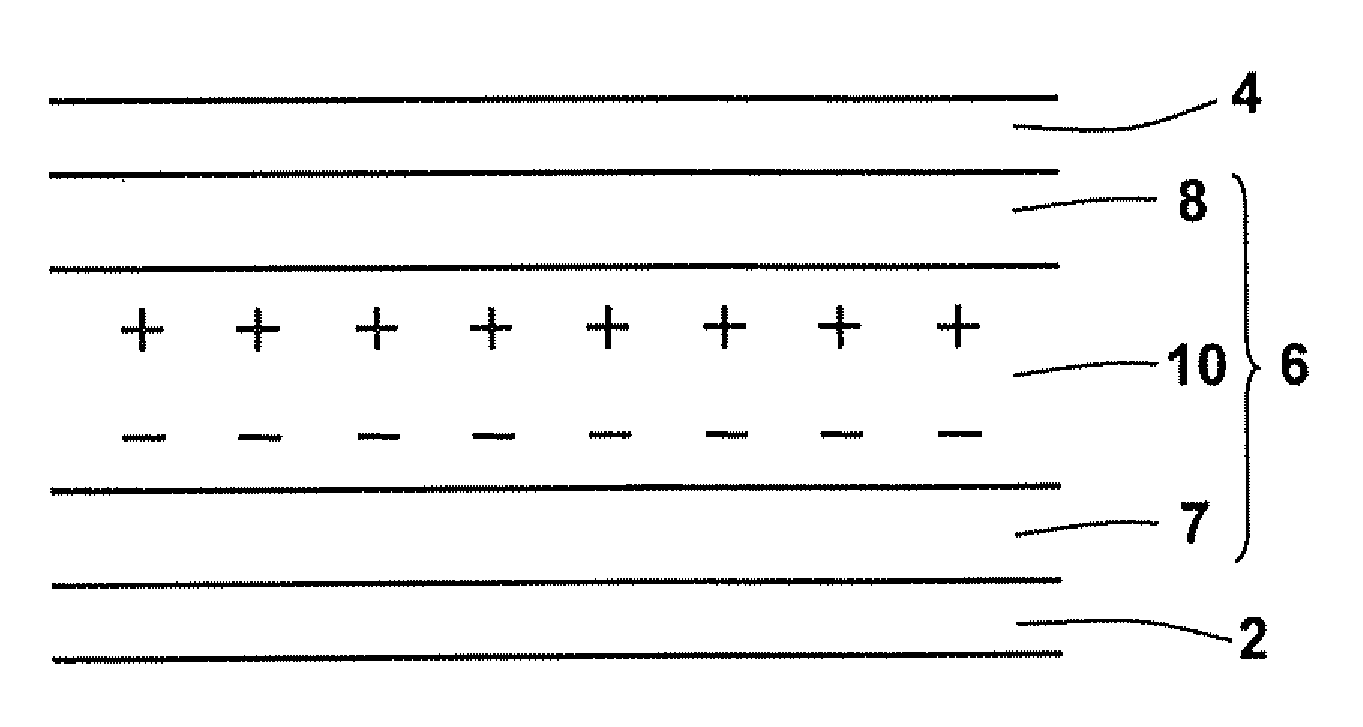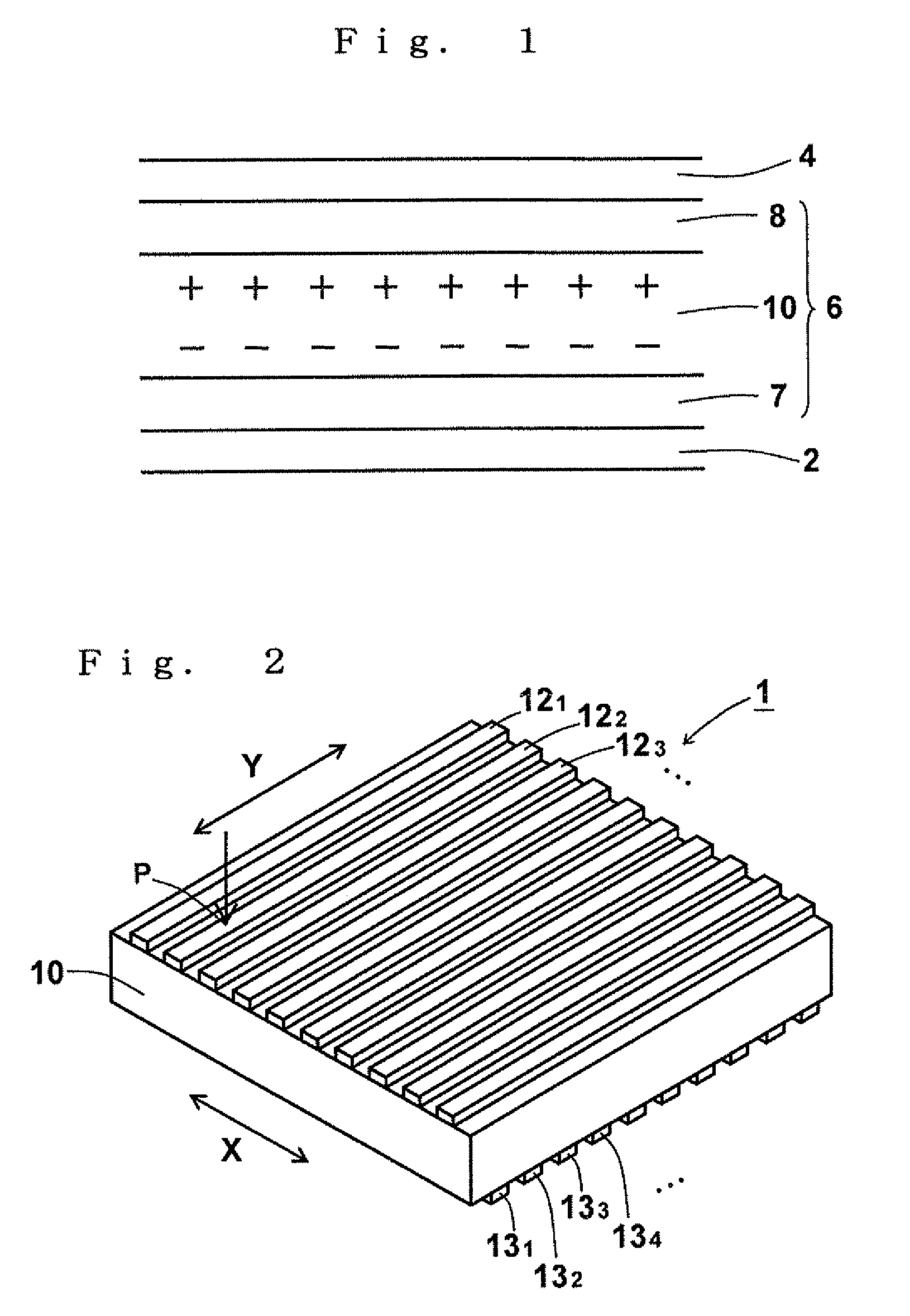Flexible deformation sensor
a deformation sensor and flexible technology, applied in the direction of force measurement, electric/magnetic measurement arrangement, instruments, etc., can solve the problems of affecting the sensing function, the inability of sensors to meet the needs of applications, and the deterioration of piezoelectric ceramics, etc., to achieve high response sensitivity, light weight and flexible
- Summary
- Abstract
- Description
- Claims
- Application Information
AI Technical Summary
Benefits of technology
Problems solved by technology
Method used
Image
Examples
reference example 2
Manufacture of Ethylmethylimidazolium bis (trifluoromethanesulfonyl) imide (ionic liquid)
[0130]Ingredients: Lithiumbis (trifluoromethylsulfonyl) imide produced by Tokyo Chemical Industry Co., Ltd. was used as it was. Cyclohexane produced by Kishida Chemical Co., Ltd. was used as it was. Other ingredients were purified depending on the intended use.
(1) To a 500 mL separable flask, a mechanical stirrer having a stirring blade, three-way cock and condenser were attached. In the flask, 250 mL of cyclohexane, 50 mL of 1-methylimidazole (0.58 mol) were placed. 1-methylimidazole was not fully dissolved in cyclohexane, two-phase separation was observed. Under agitation, 130 mL (1.74 mol) of bromoethane was added dropwise at room temperature over one hour. After the end of the dropping, the solution was heated up to 80° C. and refluxed for 24 hours. With progress of reaction, white solid substance precipitated.
(2) From the resulting suspension, excess bromoethane and cyclohexane were removed...
reference example 3
Manufacture of Nonaqueous Polymer Solid Electrolyte Using Polystylene-b-polymethylacrylate-b-polystyrene Copolymer
[0131]The copolymer (P-1) was completely dissolved in tetrahydrofuran. To this solution, a given amount of EMITFSI was added to obtain a homogeneous solution. The solution was spread on a glass to dry. The resulting transparent and flexible solid was vacuum dried at 50° C. to obtain the nonaqueous polymer solid electrolytes (E-1 to E-3).
reference example 4
Manufacture of Electrode Containing Carbon Fine Particles
[0132](1) Given amounts of an activated carbon which was an alkali activated carbon and had a BET specific surface area of 1210 m2 / g, acetylene black (‘Denka Black’ produced by Denki Kagaku Kogyo Kabushiki Kaisha), PVDF-HFP (‘Kynar #2801’, produced by Arkema Inc.) and EMITFSI were weighed into a mortar and mashed up to make a block electrode material.
(2) The obtained block electrode material was sandwiched with PET film and then heat pressed at a temperature of 130° C. to obtain a 100 μm-thick electrode film containing carbon fine particles.
PUM
| Property | Measurement | Unit |
|---|---|---|
| ionic conductance | aaaaa | aaaaa |
| ionic conductance | aaaaa | aaaaa |
| carbon number | aaaaa | aaaaa |
Abstract
Description
Claims
Application Information
 Login to View More
Login to View More - R&D
- Intellectual Property
- Life Sciences
- Materials
- Tech Scout
- Unparalleled Data Quality
- Higher Quality Content
- 60% Fewer Hallucinations
Browse by: Latest US Patents, China's latest patents, Technical Efficacy Thesaurus, Application Domain, Technology Topic, Popular Technical Reports.
© 2025 PatSnap. All rights reserved.Legal|Privacy policy|Modern Slavery Act Transparency Statement|Sitemap|About US| Contact US: help@patsnap.com



